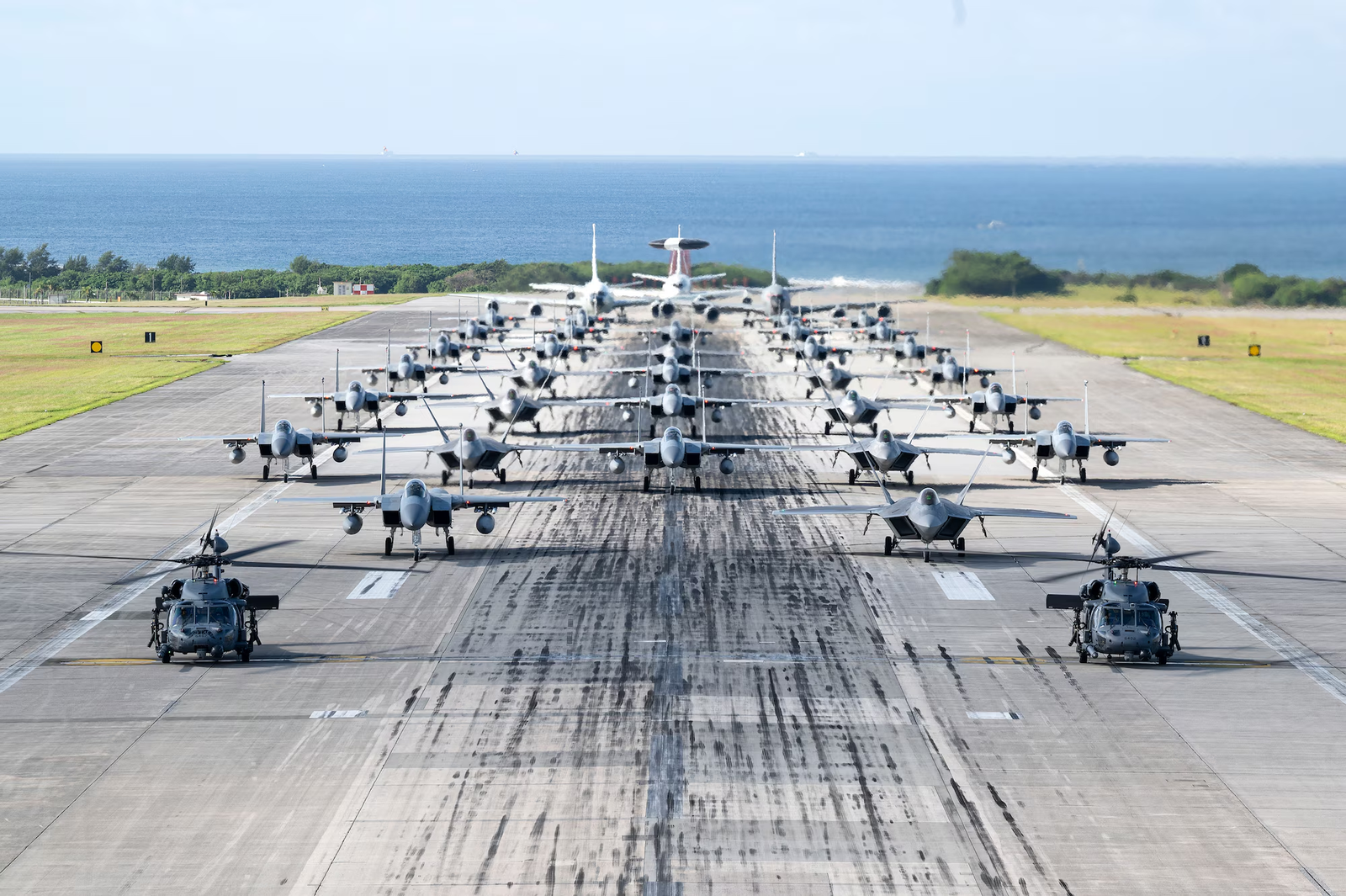
The recent elephant walk held at Kadena Air Base in Okinawa was one of the most impressive shows of U.S. airpower in the Indo-Pacific in recent times. A component of the Beverly High exercise, this was more than just a photo op—it was a well-coordinated display of strength, preparedness, and unity across several branches of the military. The large range of aircraft and air defense systems demonstrated just how vast and powerful U.S. operations in the Pacific have grown.

8. Scale and Diversity Like Never Before
This year’s deployment featured a record 53 aircraft from the Air Force, Navy, and Army, making it one of Japan’s largest ever. The fleet had 24 F-35A Lightning II stealth fighters, eight F-15E Strike Eagles, six HH-60W Jolly Green II helicopters, two MQ-9 Reaper unmanned aerial vehicles, two MC-130J Commando II special operations aircraft, six KC-135 Stratotankers, an RC-135 Rivet Joint, an E-3 Sentry Airborne Warning and Control System, two EA-18G Growlers, a P-8 Poseidon, and two Army Patriot missile systems.

This huge gathering almost doubled last year’s figures and even surpasses comparable formations such as the 52-plane display at Hill Air Force Base in Utah.

7. F-35A Lightning II – The Game Changer
At the forefront were the 24 F-35A Lightning IIs. These sensor-laden, stealthy fighters are the “quarterback” of today’s operations, integrating air, land, sea, space, and cyber capabilities. Their capacity to penetrate contested areas while providing targeting information to other platforms has revolutionized the way missions are planned and executed.

6. F-15E Strike Eagles – Heavy Hitters
Eight F-15E Strike Eagles from Seymour Johnson Air Base provided serious firepower to the formation. Tailored to deep-strike missions, these dual-role fighters have a heavier payload capacity than the F-35. Combined with stealth aircraft, they form a layered strike force that matches speed, precision, and brute firepower.

5. Electronic Eyes and Ears
Intelligence and electronic warfare were also well-covered. EA-18G Growlers jammed potential threats, and RC-135 Rivet Joints gathered signals intelligence. Maritime reconnaissance was provided by the P-8 Poseidon, while the E-3 Sentry AWACS controlled the larger airspace. Together, these systems provided cover so that any possible threat could be detected and met before it became an issue.

4. The Logistics Backbone
Aiding such a large force takes unparalleled logistics. Six KC-135 Stratotankers and two MC-130J Commando IIs delivered non-stop air refueling, stretching mission ranges. The MC-130Js also enabled special operations, from troop insertions to refueling helicopters and carrier-based aircraft. Without this infrastructure, extended operations simply wouldn’t be feasible.

3. Strength in Base Defense
For the first time, two Army Patriot missile batteries escorted the aircraft, showcasing the critical importance of ground-based defense to safeguard vital assets. Their escort signaled that Kadena is not just a launch point—it’s a defended strategic hub.

2. True Joint Force Operations
This exercise put integration to the forefront from the beginning, with Air Force, Navy, and Army service members cooperating in complete harmony. New warfare requires coordinated action in the air, at sea, and on land, and Kadena’s central location makes it the best single choice as a hub for joint and allied operations, demonstrating the worth of combined readiness.

1. Readiness and a Clear Message
Aside from the visual, the elephant walk proved hard concepts like Agile Combat Employment—rapid dispersal, emergency sorties, and runway recovery in pressure conditions—inside the real world. Emergency responses and battle damage repairs were practiced by Airmen, conveying a message: these forces are effective, ready, and one team.

Weeks of careful planning were invested in bringing the event to fruition. Around-the-clock efforts by maintenance staff and support personnel kept each aircraft fully mission-capable without upsetting ongoing activity. Ahead, Kadena will host next-generation F-15EX Eagle II fighters, cementing the base’s position as a main hub for Pacific air operations for years to come.
